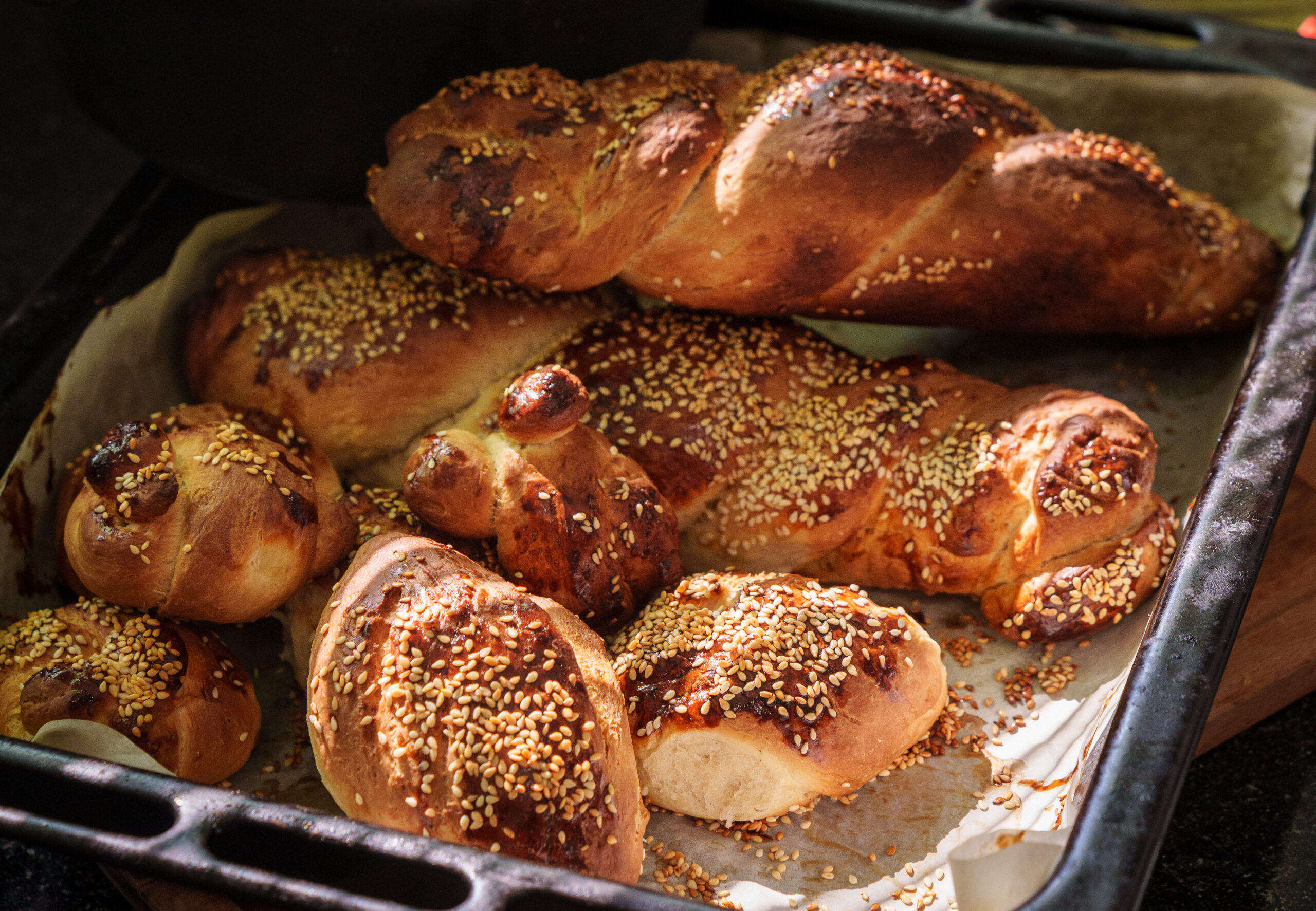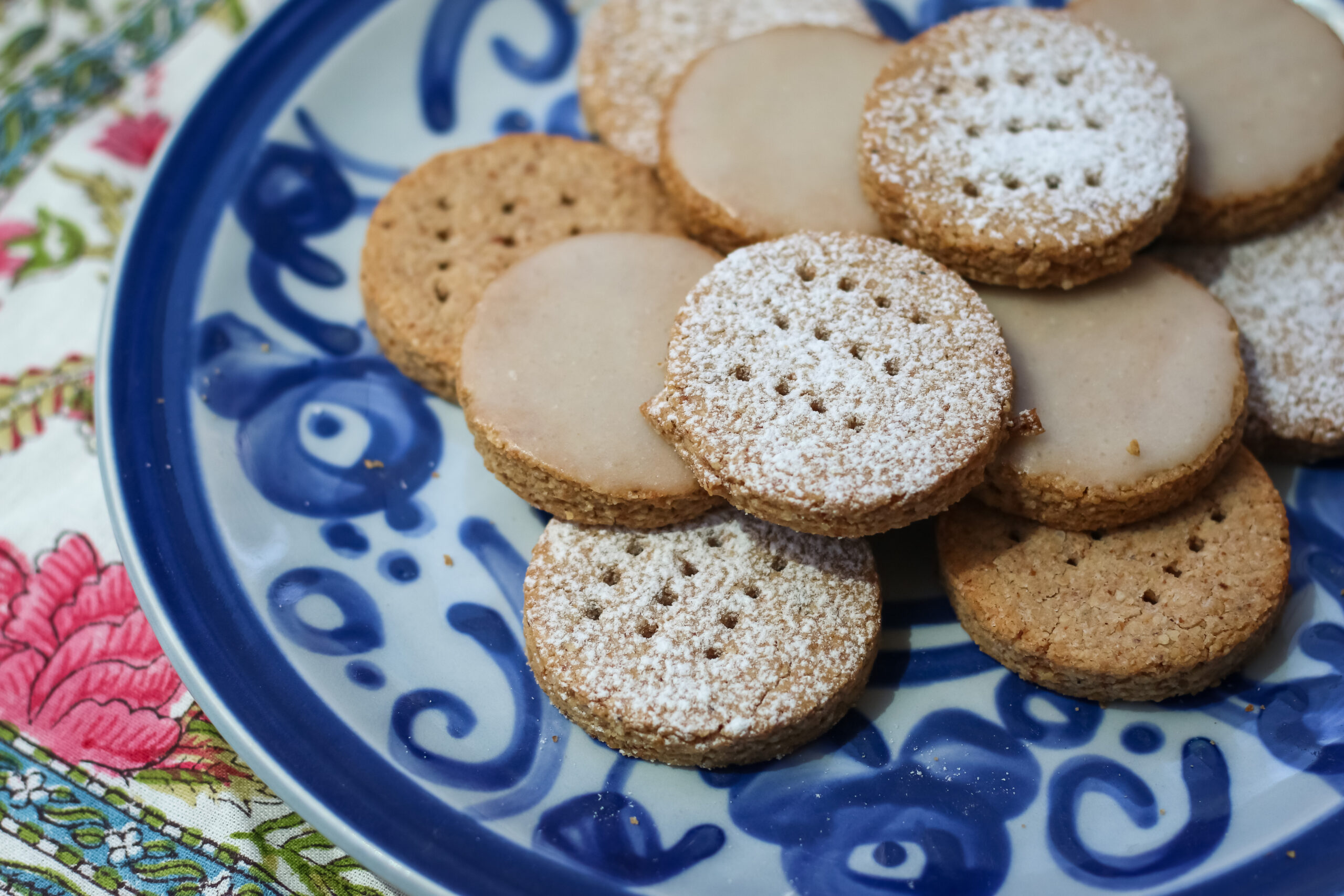There are countless versions and fillings of the beloved, crunchy, multi-layered bourekas. Wherever the Ottoman Empire spread, the pastry came with and was adopted by the locals, who adapted it to local tastes with local ingredients and cooking techniques.
In Israel it holds a place of honor; it is impossible to imagine the Israeli kitchen without it. It comes in multiple forms from simple, home-made bourekas to industrial ones and artisanal varieties.
We have recently witnessed a wave of new bakeries making sophisticated European pastries, side-by-side with giant bourekas served with a hard-boiled egg (perhaps even some zhug, if you’re lucky). So, it’s no wonder that talented bakers and pastry chefs combined the two into a super-crunchy hybrid — an especially crisp bourekas made from croissant dough, with a savory filling.
Before we start: Making puff pastry is quite an adventure. If this is your first attempt, take a deep breath and be ready to learn as you go. The detailed recipe has tips to help you succeed the first time — but the bourekas will be no less wonderful if you use high-quality store-bought puff pastry.
For the dough:
40 grams (1.4oz) fresh yeast, or 3½ tablespoons active dry yeast
1¼ cups (300 grams) milk
2 medium-size eggs (100 grams)
3 egg yolks (50 grams)
3 cups (420 grams) all-purpose flour
3 cups (420 grams) bread flour
5 tablespoons (40 grams) sugar
½ tablespoon (10 grams) fine salt
75 grams (2.6oz) butter, at room temperature (not melted)
2 tablespoons fresh or dried hyssop leaves, finely chopped
500 grams (1.1lb) cold butter, for laminating
2 beaten eggs, for brushing
For the filling:
200 grams (7oz) lightly salted feta
100 grams (3½ oz) hard sheep’s milk cheese, grated
200 grams (7oz) fresh ricotta
⅓ cup yogurt stone hard cheese, grated, optional
150 grams (5oz) Kashkaval cheese, grated
12 cloves garlic confit
For the salad:
10-12 baby cucumbers, thinly sliced
1 cup mint leaves
A handful fresh hyssop leaves
2 tablespoons fresh oregano leaves
1 red onion, thinly sliced
1 tablespoon freshly ground sumac
½ lemon, juiced
¼ cup olive oil
Salt, to taste
To serve:
2 bunches spinach, rinsed
- Prepare the dough: whisk the fresh yeast, milk, eggs and yolks in the bowl of a stand mixer, preferably by hand (if using active dry yeast, add with the flour). Add the flours, sugar, salt, butter and hyssop leaves and, using the dough hook, mix at medium speed for 3 minutes. Increase to medium-high speed and knead for 4 minutes, to a smooth and elastic dough.
- Cover the bowl loosely with plastic wrap and let rise for 1 hour at room temperature.
- Knead the dough gently to release some of the air and shape into a ball. Cover loosely with plastic wrap and refrigerate for 1 hour.
- Prepare the butter: halve the cold butter crosswise and place on parchment paper side by side to form a rectangle. Using a rolling pin, roll into a 20x40cm/ 8×16-in rectangle of even thickness. Store in a cool place, making sure the butter block is at a workable temperature: not too soft and runny, and not too hard that it breaks when rolled.
- Laminate the dough: making sure the room is cold, place the dough on a lightly floured work surface and roll out to a 20x60cm/ 8×24-in rectangle 8mm/0.3-in thick.
- Make a letter-fold: Place the butter block over the dough so that it covers two thirds of it. Fold the butter-less third over the middle, then fold the other end on top.
- Turn the dough 90 degrees so that the “sealed” side faces left. Roll out to a 20x60cm/ 8×24-in rectangle, this time the dough will show more signs of resistance. Make sure the butter does not run between the folds or through the layers. This can happen when the butter is too soft. If it is, put the dough back in the fridge. If the dough sticks to the work surface, turn on the air conditioning and dust your surface with flour. If the butter is too cold and tears the dough, wait a moment and be gentle with the dough.
- Repeat this process, folding one third of the dough over the middle, then folding the remaining third on top and turning the dough 90 degrees with the “sealed” side facing left. Cover the dough loosely in plastic wrap and refrigerate for 2 hours.
- Repeat this process two more times, turning the dough 90 degrees before each roll. Cover the dough loosely in plastic wrap and refrigerate overnight (you can also freeze the dough for up to 1 week).
- Prepare the filling: mix all the ingredients in a bowl.
- Roll out the dough on a lightly floured work surface into a 40x50cm/16×20-in rectangle 6mm/0.2-in thick. Using a ruler and a sharp knife, cut twelve 12cm/4½-in squares.
- Rub one garlic clove on each square and place 2 tablespoons of filling on top. Fold the dough over the filling into a triangle (there is no need to seal the edges).
- Transfer to a baking tray lined with parchment paper about 5cm/2-in apart. Cover with a towel or loosely with plastic wrap and let rise in a warm place for about 1 hour, until double in size.
- Preheat the oven to 200C/400F on the convection or turbo setting, if available. If not, bake at 210C/410F and be sure to rotate the trays halfway through baking.
- Brush the pastries with a beaten egg and bake for 15-20 minutes, until golden brown.
- Prepare the spinach: In the meantime, heat a little olive oil in a wide skillet. Add the spinach and sauté for several minutes, until the leaves wilt and lose their volume. Season with salt, strain and chop.
- Prepare the salad: mix all the ingredients, taste and adjust the seasoning to your taste.
- To serve: slightly open the warm börek and place sauteed spinach and salad on top. Grate a sprinkle of the yogurt stone and serve.




